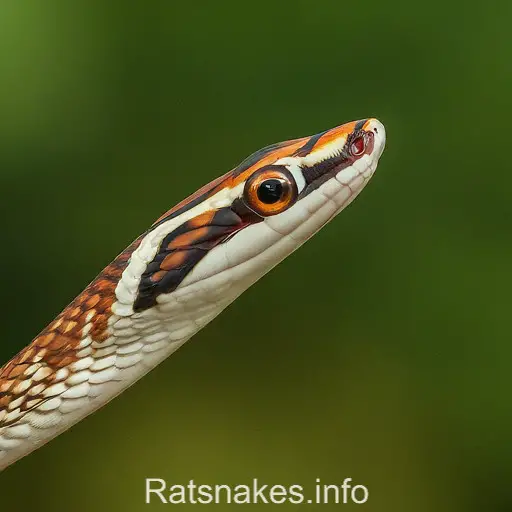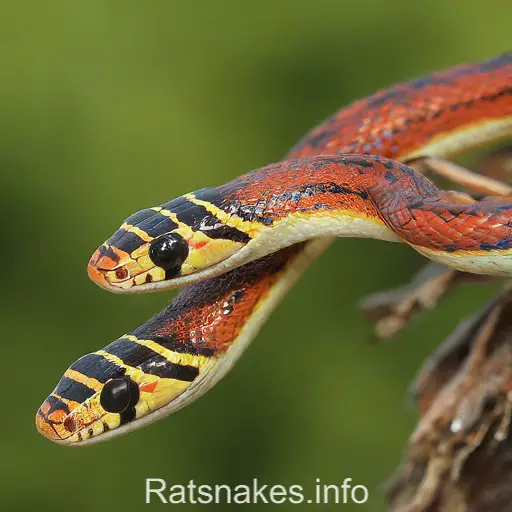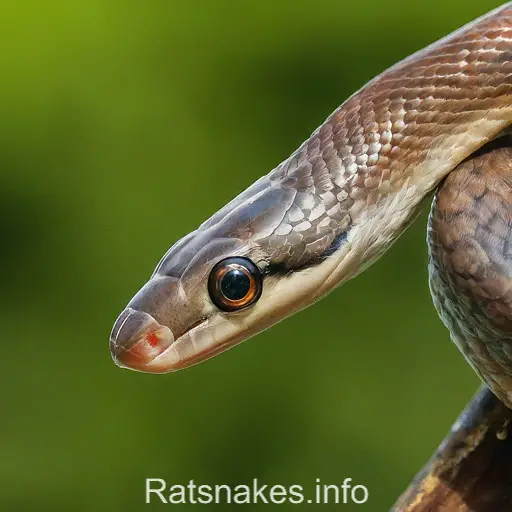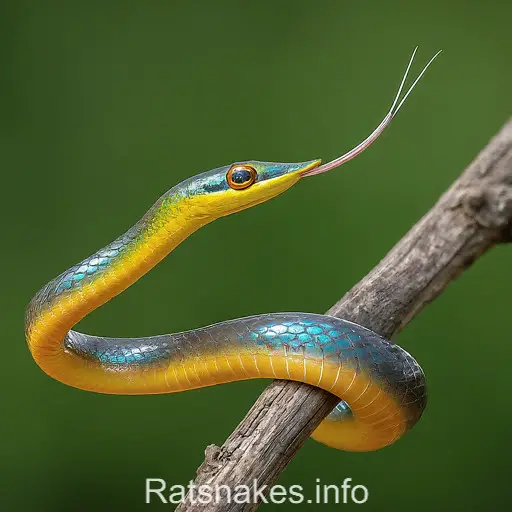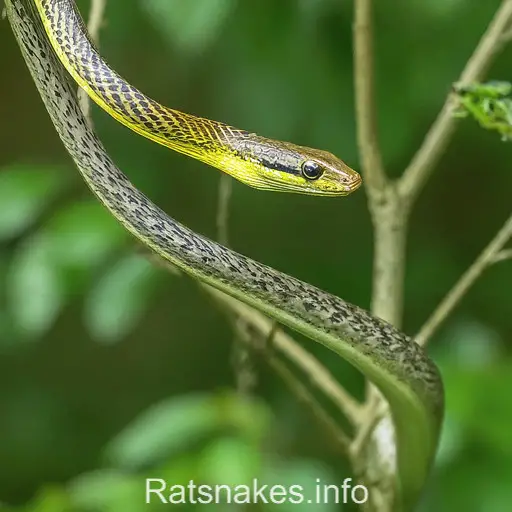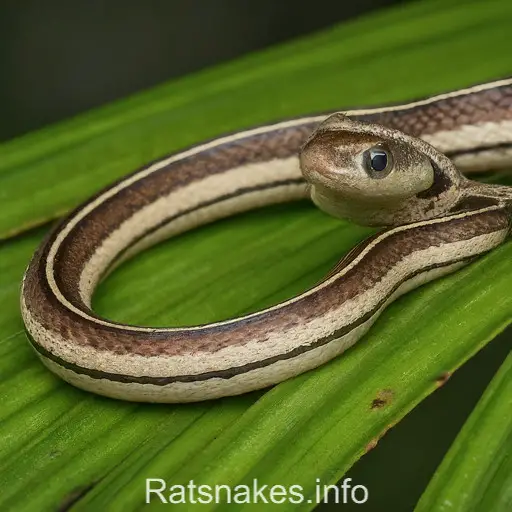
Welcome to our guide on Coelognathus flavolineatus, a fascinating species of snake that captivates with its striking appearance and intriguing behaviors. Commonly known as the black copper rat snake, this non-venomous serpent is native to Southeast Asia, where it thrives in diverse habitats ranging from forests to agricultural areas.
Our aim in this article is to delve into the world of Coelognathus flavolineatus, shedding light on its physical characteristics, habitat preferences, diet, and unique adaptations. As snake enthusiasts ourselves, we are excited to share our knowledge and insights about this beautiful species, known for its distinctive black body adorned with vibrant yellow stripes.
Join us on this exploration of Coelognathus flavolineatus as we uncover the secrets of this mesmerizing snake and gain a deeper appreciation for the wonders of the natural world. Let’s embark on this journey together and discover the hidden treasures of the black copper rat snake.
Physical Characteristics of Coelognathus flavolineatus
Coelognathus flavolineatus, commonly known as the black copper rat snake, is a striking serpent with distinctive features that set it apart in the snake world. Here are some key physical characteristics of this fascinating species:
- Coloration: They have a sleek black body adorned with bold yellow stripes that run along the length of their scales, giving them a visually arresting appearance.
- Size: Adult black copper rat snakes can grow to an impressive length of around 4 to 6 feet, with males typically being larger than females.
- Scales: Their scales are smooth and glossy, adding to their sleek and elegant look. These snakes have a muscular build, reflecting their agility and strength.
- Head Shape: Coelognathus flavolineatus is characterized by a distinct head shape, slightly triangular and more pronounced than that of other snake species.
- Eyes: Their eyes are large and prominent, providing them with excellent vision that aids in hunting and navigation in their natural habitat.
- Pattern: The intricate pattern of vibrant yellow stripes against the deep black of their scales serves as a form of camouflage in their woodland and grassland habitats.
- Ventral Scales: The underside of these snakes is marked by lighter-colored ventral scales, adding contrast to their overall appearance.
- Tail: Their tail tapers to a fine point, aiding in movement and balance as they navigate their surroundings with agility.
Coelognathus flavolineatus’ physical characteristics are not only visually captivating but also play key roles in their survival and adaptation to their environment.
Habitat Preferences
When it comes to Coelognathus flavolineatus, also known as the black copper rat snake, understanding its habitat preferences is key to appreciating its survival strategies. These snakes are primarily found in a variety of habitats, showcasing their adaptability and versatility in different environments.
- Woodlands: Coelognathus flavolineatus are often spotted in wooded areas with dense vegetation, where they can utilize their excellent climbing skills to navigate through the trees.
- Grasslands: They are also known to inhabit grasslands, where their sleek body shape and agility make it easier for them to move swiftly through the grassy terrain.
- Farmlands: These snakes have been observed in agricultural areas as well, where they benefit from the abundance of prey like rodents and birds attracted to the crops.
Their choice of habitat is closely linked to their prey availability and the need for suitable shelter. By adapting to various environments, Coelognathus flavolineatus have managed to establish themselves as successful and resilient predators in the wild.
Diet of the Black Copper Rat Snake
When it comes to the diet of the Black Copper Rat Snake, we see a predatory creature that plays a vital role in local ecosystems. These snakes have a wide-ranging diet that primarily consists of small mammals, birds, and their eggs. They are known to consume various types of rodents, including mice, rats, and even squirrels, making them effective rodent controllers in their habitats.
Interestingly, these snakes are also opportunistic feeders and may occasionally consume amphibians, reptiles, and even insects. With their ability to climb trees and move swiftly on the ground, the Black Copper Rat Snake has a diverse menu that allows them to adapt to different food availability in their surroundings.
In agricultural settings, these snakes are highly beneficial as they help control pest populations, especially rodents that can damage crops. By preying on these pests, the Black Copper Rat Snake contributes to ecological balance and reduces the need for harmful pesticides.
In essence, the dietary preferences of the Black Copper Rat Snake underscore its importance as a top predator in its environment. Their flexibility in food choices and hunting strategies demonstrate their role in maintaining a healthy and sustainable ecosystem.
Unique Adaptations
When it comes to Coelognathus flavolineatus, we’re met with fascinating adaptations that highlight its survival skills and hunting techniques.
- Camouflage: Their skin coloration mimics the environment, allowing them to blend seamlessly with their surroundings.
- Venom Immunity: These snakes have developed resistance to the venom of certain prey items, giving them an advantage in capturing and consuming toxic animals.
- Thermoregulation: Coelognathus flavolineatus can regulate their body temperature efficiently, enabling them to thrive in a variety of environments.
- Climbing Abilities: Equipped with strong muscles and scales, they are adept climbers, known for scaling trees and other structures effortlessly.
These unique adaptations underscore the incredible Coelognathus flavolineatus as a species that has evolved to excel in different habitats and ecological niches.
Key Takeaways
- Coelognathus flavolineatus, also known as the black copper rat snake, is a visually captivating species native to Southeast Asia.
- Their physical characteristics, including sleek black bodies with bold yellow stripes, large eyes, and a distinct head shape, contribute to their adaptation and survival.
- These snakes are versatile in their habitat preferences, thriving in woodlands, grasslands, and agricultural areas where they prey on rodents and birds.
- The diet of the black copper rat snake consists of small mammals, birds, and rodents, playing a crucial role in controlling pest populations.
- Unique adaptations such as camouflage, venom immunity, thermoregulation, and climbing abilities showcase their remarkable survival skills and hunting techniques.
Conclusion
In essence, the Coelognathus flavolineatus stands as a testament to nature’s ingenuity, showcasing a myriad of adaptations that enable its survival and success in the wild. From its camouflaging skin coloration to its venom immunity and efficient thermoregulation, this species demonstrates a fine balance of skills tailored for its ecological niche. The strong climbing abilities of the Coelognathus flavolineatus further highlight its versatility and prowess in navigating diverse habitats. As we unravel the intricacies of this snake’s evolution, we gain a deeper appreciation for the interconnectedness of species within ecosystems. The Coelognathus flavolineatus serves as a living example of nature’s ability to adapt and thrive in the face of environmental challenges.


